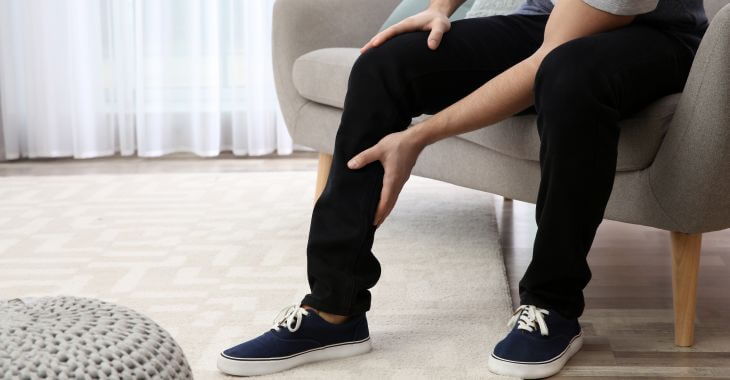Causes and Treatment for Shortleg Syndrome

Is one leg longer than the other? If you have a leg length discrepancy, it is often referred to as “shortleg syndrome” or SLS. This condition can greatly affect how your body functions, especially as you get older. Here is what you need to know about SLS, including the possible causes and treatment options.
The body is not always symmetrical – it is common for one side of the body to be slightly different from the matching parts on the other side. One foot may be slightly larger than the other, just like one leg can be longer than the other. There are two types of SLS: anatomical and functional.
What Is Anatomical Leg Length Discrepancy?
When one leg is longer than the other, structurally, it is called anatomical SLS. This means the bones are shorter on one side or there are other structural length differences. Anatomical short leg syndrome occurs when anywhere between the foot and hip are different lengths than the other side.
The causes of anatomical SLS can vary from congenital conditions to changes in the leg length due to surgery or other procedures. Possible causes of anatomical leg length discrepancy include congenital scoliosis, congenital leg length variations, injuries to growth plates, and hip replacement surgery.
What Is Functional Leg Length Discrepancy?
When the legs are structurally equal, but one leg appears longer than the other, it is called functional short-leg syndrome. This means the leg bones are equal, but other tissues within the leg structure are different, causing a discrepancy. Some possible causes of functional SLS include:
- Low or dropped foot arch
- Tightened IT band (the tissue that connects the hip and shin bones)
- Osteoarthritis in the hip, knee, or ankle joints causing lost cartilage
- Injuries to the legs that cause leg length discrepancies
Functional SLS is acquired over time, which can affect your gait and balance. Even a small difference in leg lengths can cause stress on the entire body, which can become worse as you get older. Many cases of chronic back and hip pain occur due to many years of compensating for SLS.
How to Tell If One Leg Is Longer Than the Other
When there is a larger difference than 2 centimeters in leg length, it may be visibly noticeable. However, small differences may need tests to determine if the legs are indeed different lengths. A doctor can perform X-rays and anatomical tests to determine if there are differences in leg lengths.
Symptoms of SLS
Many people with anatomical SLS from an early age may not have symptoms in their childhood or early adulthood, especially if the leg length difference is minimal. Functional SLS also may not have major symptoms at first, as the body is adept at changing mechanics to accommodate the length difference.
Over decades of compensating for the different leg lengths, it can affect your spine and many aspects of your body. For many, the symptoms of SLS become more prominent after around the age of 40. Some of these symptoms include:
- Chronic back pain
- Sciatica (nerve pain on one side)
- Hip or knee pain on one or both sides
- Muscle tightness on one side in the buttocks, hips, or legs.
- Poor balance when running or walking
- Knee problems – hyperextended or flexed, depending on the side
- Uneven posture or walking with a limp
Symptoms can be more pronounced when the leg length differences are larger. Usually when the difference is less than half an inch, the symptoms are less pronounced but can cause stress on the body over many years. Treatment can help minimize the symptoms and improve mobility.
Treatment for Leg Length Discrepancy
The type of treatment used for short-leg syndrome depends on the type and severity. Anatomical SLS that occurs in childhood and is severe may require surgical intervention to balance the leg lengths for improved mobility. However, functional SLS usually can be treated with non-surgical methods.
Treatments for SLS can include orthopedic footwear, with one shoe having a thicker heel or sole than the other. Other treatments can include physical therapy, chiropractic care, strengthening exercises, traction, and inflammation reduction can all help relieve pain and improve function.
Anatomical SLS treatment usually begins in childhood unless it is due to surgical alterations like hip replacement surgery. Functional SLS treatments may begin once leg length discrepancy is diagnosed to improve mobility and reduce the impact of SLS on the spine and joints.

When to See a Doctor SLS
Now you know how to tell if one leg is longer than the other and what symptoms you may experience. If you believe you have anatomical or functional shortleg syndrome, or your child has SLS, you should visit your doctor for diagnosis and treatment options.
Leg length discrepancies are common, both in children and in adults. If you have this condition, there are effective treatments that can minimize your symptoms and stress on your body. Talk to your doctor about therapies that are available for SLS.
The information provided on this website, including text, graphics, images, and other materials, is intended solely for informational purposes and should not be used as a substitute for professional medical advice, diagnosis, or treatment.




)